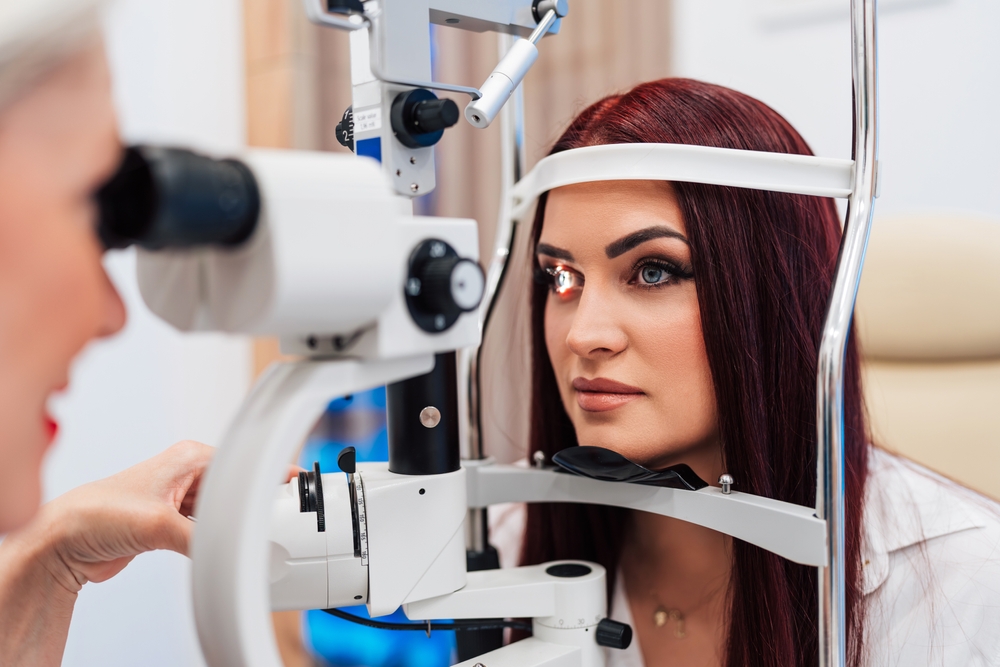
What to Expect During a Comprehensive Eye Exam: A Step-by-Step Guide
At Vision Source Mandeville, we understand the importance of maintaining optimal eye health. A comprehensive eye exam is more than just a vision check—it’s a thorough assessment of your eye health, designed to detect potential issues early and help preserve your vision. Whether you're preparing for your first eye exam or just want to understand the process better, here’s a step-by-step guide on what to expect during your comprehensive eye exam.
Patient History and Discussion
Your eye exam begins with a discussion about your overall health, medical history, and any current concerns you may have regarding your vision. We’ll ask about symptoms like blurred vision, headaches, or dry eyes, as well as your family history of eye conditions, such as glaucoma or macular degeneration. This information helps your optometrist understand your unique needs and potential risk factors.
Visual Acuity Testing
Next, we’ll assess how well you see at different distances using a visual acuity test. You’ll be asked to read letters on an eye chart, first covering one eye, then the other. This simple test allows your optometrist to determine if you have nearsightedness (myopia), farsightedness (hyperopia), or astigmatism, which can be corrected with prescription lenses.
Refraction Testing
If it’s determined that you need corrective lenses, we’ll perform refraction testing to identify your exact prescription. This involves looking through a device called a phoropter, where you’ll compare different lens options. We’ll ask, "Which is better: one or two?" as we narrow down the lens that gives you the clearest vision.
Eye Muscle Function Test
Healthy eye muscle function is essential for proper eye movement and coordination. Your optometrist will check how your eyes work together by asking you to follow a moving object with your eyes. This test can help detect issues like strabismus (crossed eyes) or other conditions that affect eye alignment.
Pupil Response Testing
Your pupils play a key role in regulating the amount of light that enters your eyes. By shining a light into each eye, your optometrist will assess how well your pupils react. Irregular pupil responses can indicate underlying health issues that may need further evaluation.
Slit-Lamp Examination
The slit-lamp exam is a critical part of assessing your eye health. Using a special microscope, your optometrist will examine the structures at the front of your eye, including the cornea, iris, and lens. This test can detect cataracts, corneal injuries, and other abnormalities.
Intraocular Pressure Measurement
To screen for glaucoma, a condition caused by increased pressure within the eye, your optometrist will measure your intraocular pressure. This painless test is often performed with a puff of air (non-contact tonometry) or using a small device that gently touches the eye’s surface (contact tonometry).
Retinal Examination (Fundoscopy)
The back of the eye, including the retina and optic nerve, is examined through a process called fundoscopy. Your optometrist may dilate your pupils using special eye drops to get a better view of these structures. This exam is essential for detecting conditions such as diabetic retinopathy, macular degeneration, and optic nerve damage.
Consultation and Recommendations
Once all tests are complete, your optometrist will discuss the results with you. If any issues are detected, we’ll explain the condition and recommend treatment options, which may include prescription lenses, eye drops, or follow-up appointments for further testing. You’ll also receive advice on how to care for your eyes and maintain good vision health.
Book Your Comprehensive Eye Exam with Vision Source Mandeville Today
At Vision Source Mandeville, we are committed to providing exceptional eye care and ensuring you leave our office with a clear understanding of your eye health.
Contact Vision Source Mandeville to schedule your next comprehensive eye exam and take the first step toward maintaining healthy eyes and sharp vision. Visit our office in Mandeville, Louisiana, or call (985) 300-5700 to book an appointment today.










